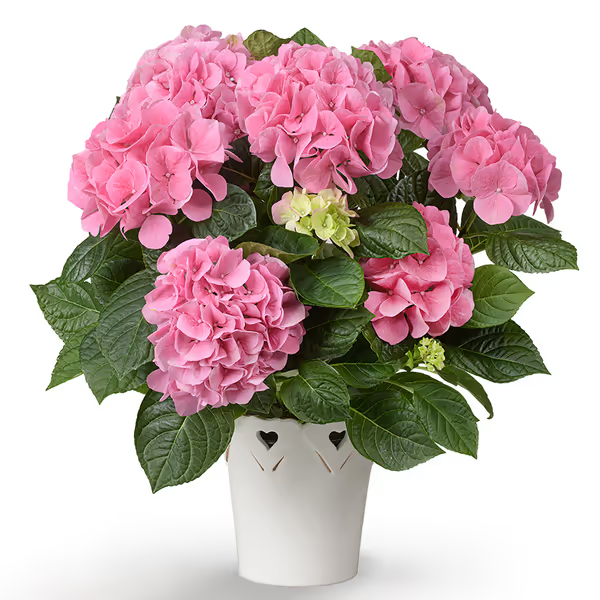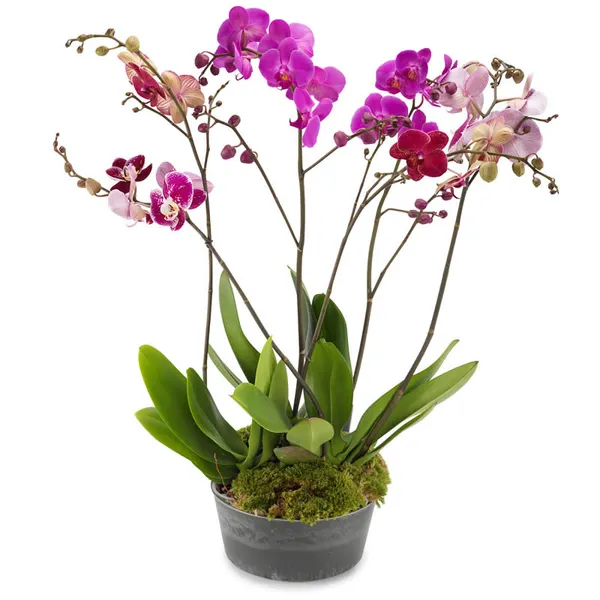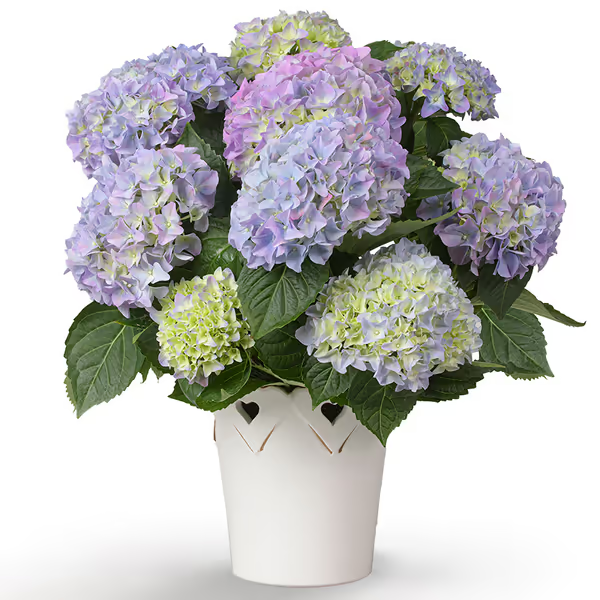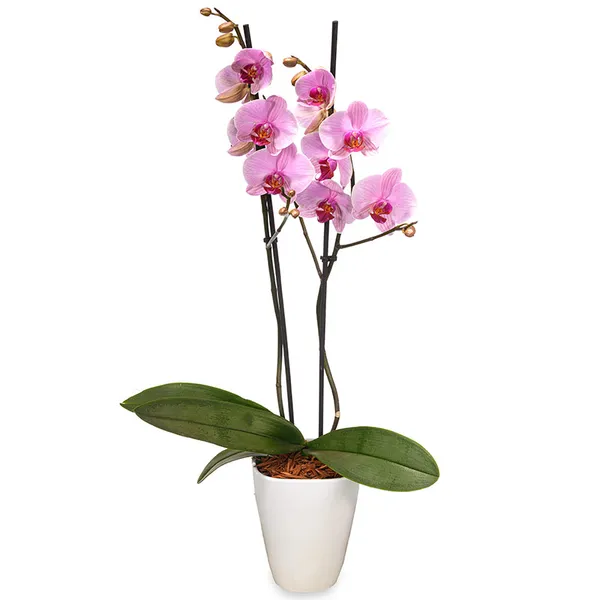Curcuma: The Exotic Beauty with Healing Roots
Curcuma, often called Siam Tulip, is a tropical plant admired for its upright, tulip-like bracts in vibrant shades of pink, purple, or white. Although not related to true tulips, curcuma stands out with its dramatic shape and ornamental elegance. Native to Southeast Asia, it belongs to the ginger family (Zingiberaceae) and is closely related to the turmeric root. In floral symbolism, Curcuma represents purity, healing, spiritual protection, and feminine strength.
COMMON NAME
Curcuma, Siam Tulip
BOTANICAL NAME
Curcuma, Siam Tulip
ORIGIN
Southeast Asia (Thailand, Cambodia)
PEOPLE ALSO CALL IT
Hidden Lily, Summer Tulip, Thai Tulip
FLOWERING TIME
Summer (June to September)
ASPECT
Bright, indirect light; warm, humid climate
SYMBOLISM
Bright, indirect light; warm, humid climate
Care Tips for Curcuma in the Garden or Pot
Light: Loves bright, indirect sunlight—direct sun may scorch the leaves.
Watering: Water regularly to keep the soil evenly moist, but avoid waterlogging.
Humidity: Prefers high humidity—ideal for warm bathrooms or with a humidity tray.
Soil: Rich, well-draining potting mix (add perlite or orchid bark).
Fertilisation: Feed every 2–3 weeks during growth with a balanced houseplant fertiliser.
Dormancy: After flowering, the plant goes dormant. Reduce watering and let foliage die back naturally. Store rhizomes cool and dry.
Repotting: Replant rhizomes in spring when growth resumes.
Symbolism & Meaning
Curcuma represents healing energy, calm strength, and inner beauty. Because of its connection to turmeric, a powerful healing spice, it also symbolises restoration and wellness. In many cultures, it's used as a spiritual protection flower, especially in rituals focused on balance, purity, and grounding energy. Its feminine elegance and sturdy posture make it a meaningful gift for those recovering, transforming, or growing.
Types of Curcuma Plants
Curcuma alismatifolia ‘Siam Scarlet’ – Bold pink bracts with vivid green leaves.
‘Chiang Mai Pink’ – Light pink flowers, very popular as a potted plant.
‘Snow White’ – Pure white bracts, elegant and rare.
Curcuma longa – The culinary turmeric variety, more leafy with underground golden rhizomes.
Miniature hybrids – Compact cultivars ideal for tabletops or small pots.
Frequently Asked Questions About Curcuma Plant
Curcuma (botanically Curcuma longa) is a tropical plant in the ginger family. Its rhizome (root) is the well-known spice turmeric, famous for its vibrant yellow-orange colour and health properties. It’s used in cooking, cosmetics, and natural medicine.
Turmeric is valued for its anti-inflammatory and antioxidant properties. It’s often used to support digestion, joint health, the immune system, and even skin care. The active compound is curcumin, which gives turmeric its colour and many of its health effects.
In moderate amounts, turmeric is considered safe. However, very high doses (especially supplements) taken over a long period may stress the kidneys or liver, particularly in people with pre-existing conditions. Always check with your doctor before using high-dose curcumin supplements.
A typical healthy dose is 1–3 grams of dried turmeric powder per day, or up to 500–1000 mg of curcumin extract. It's best taken with black pepper or fat, which help absorption. Don’t overdo it – more isn’t always better. If you are unsure how much turmeric to take, we recommend consulting your doctor.
The curcuma plant has large, lance-shaped green leaves and produces elegant cone-shaped flowers, often pink, purple, or white, depending on the variety. Underground, it grows orange-yellow rhizomes, similar to ginger.
Curcuma loves warmth, humidity, and bright indirect light. Keep the soil evenly moist, but avoid waterlogging. During the growing season (spring to late summer), feed every 2–3 weeks with a balanced fertiliser. In autumn, the plant goes dormant – reduce watering and let the leaves die back naturally.
Curcuma is a rhizome-forming perennial herb from the ginger family (Zingiberaceae). It’s native to South and Southeast Asia and is grown for its medicinal root, ornamental foliage, and beautiful flowers.
Yes, you can still eat turmeric even when the plant is blooming.
The flowering doesn’t affect the quality of the rhizome (the edible root). However, most of the plant’s energy goes into the flower during blooming, so the root might stop growing for a while. It’s best to harvest turmeric when the leaves and flowers start to dry up. This is when the rhizome is most mature and aromatic.
The curcuma plant usually blooms in summer, from June to August.
Its beautiful, exotic-looking flower can last several weeks and is a real eye-catcher indoors or in the garden. The flowering period may vary slightly depending on the climate and care.
To encourage turmeric to bloom, it needs warmth, humidity and indirect light.
Keep the plant in a bright spot, avoid direct sun, and ensure the soil stays slightly moist. During the growing season (spring to summer), feed it with a gentle liquid fertiliser every 2-3 weeks. Warm temperatures above 20°C and high humidity will greatly increase the chances of flowering.
The turmeric flower (curcuma) thrives best with indirect light, consistent moisture, and warm conditions.
Keep the soil evenly moist but not soggy. Avoid waterlogging. Place the plant in a bright location, away from direct sunlight. During flowering, mist the leaves occasionally to maintain humidity. After blooming, the plant enters a rest period. Reduce watering and allow the foliage to die back naturally.




